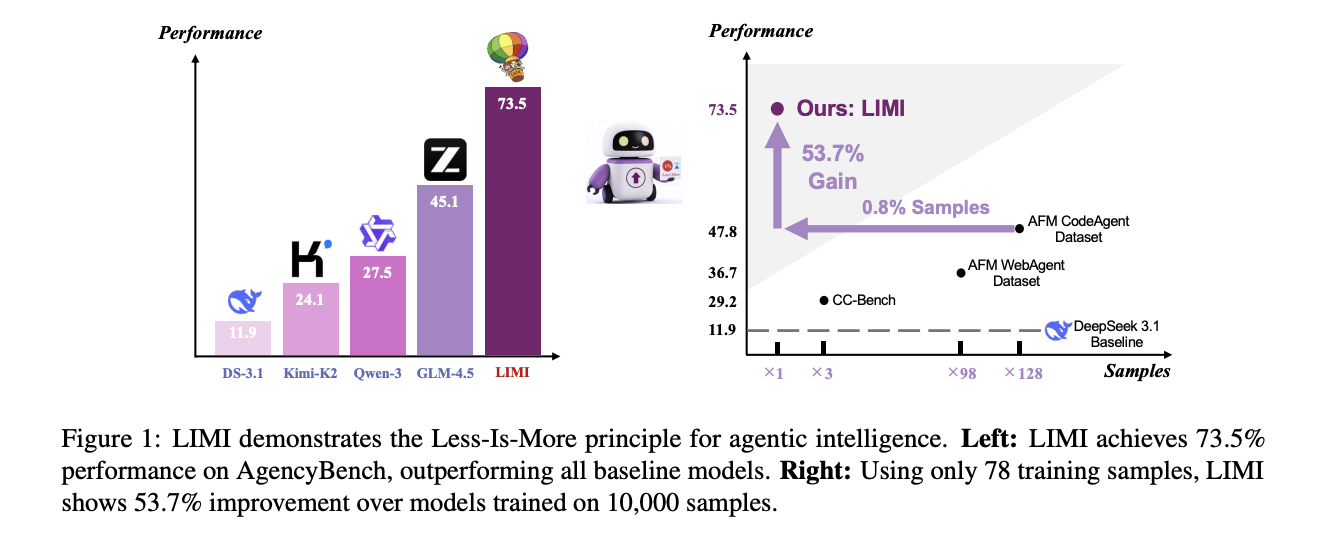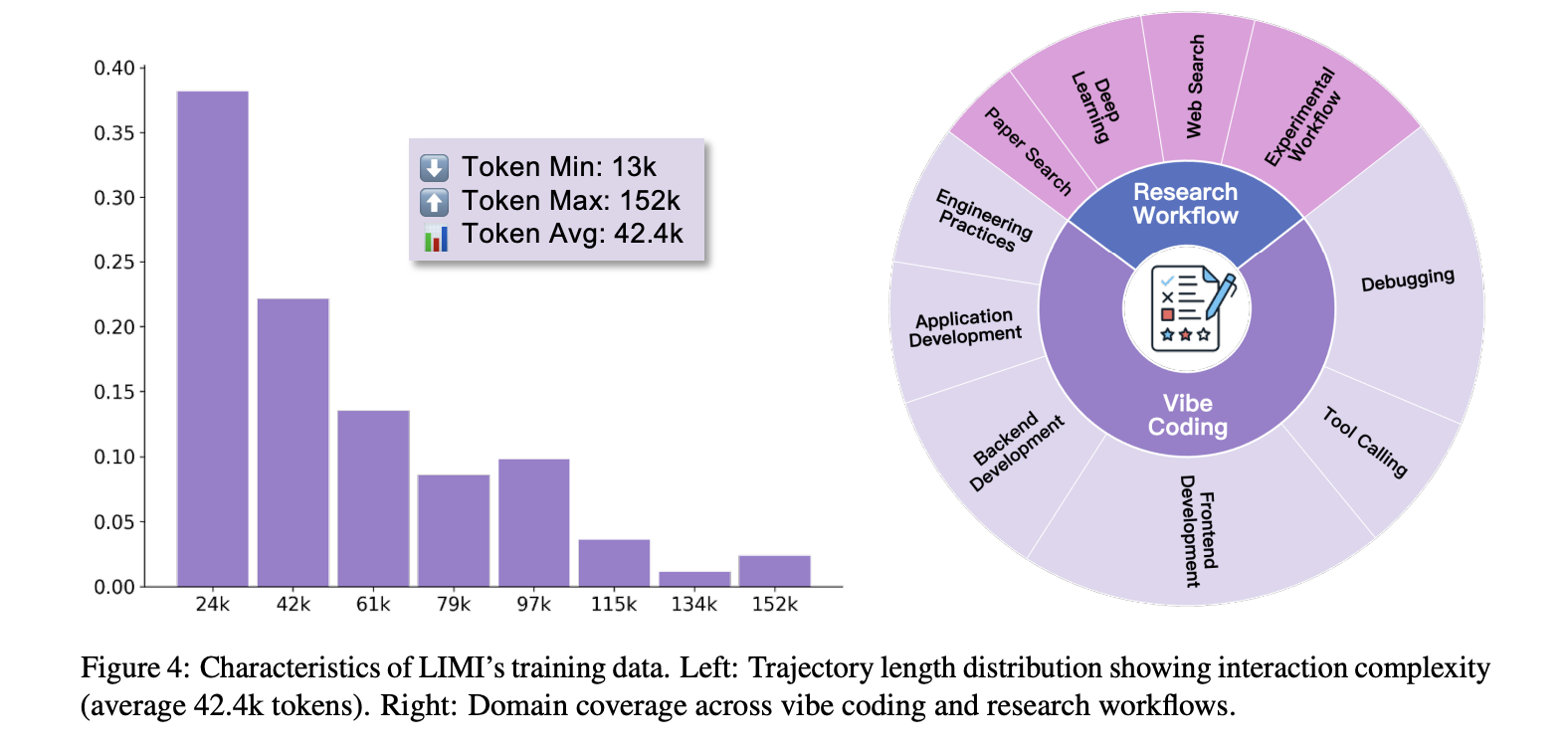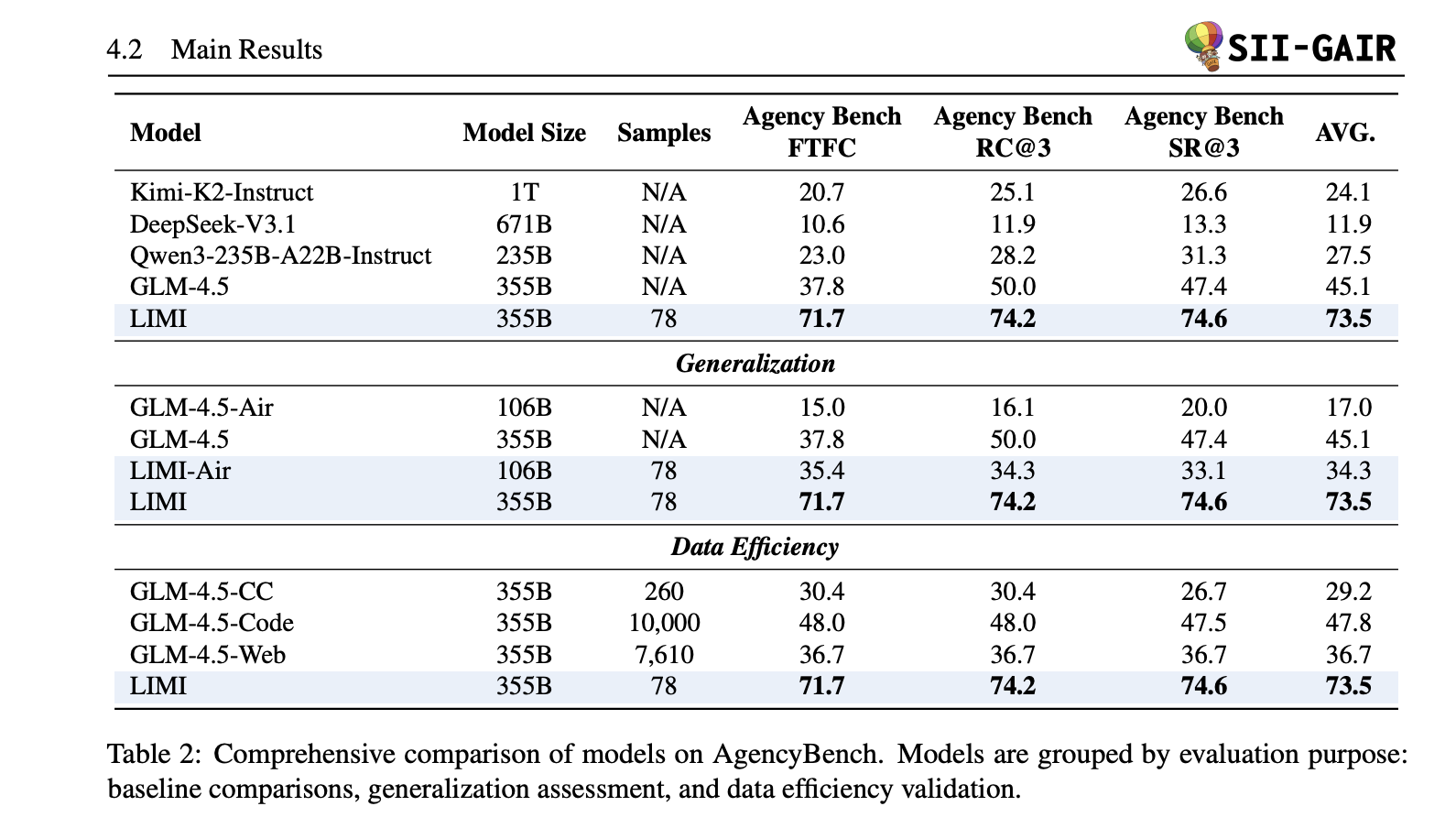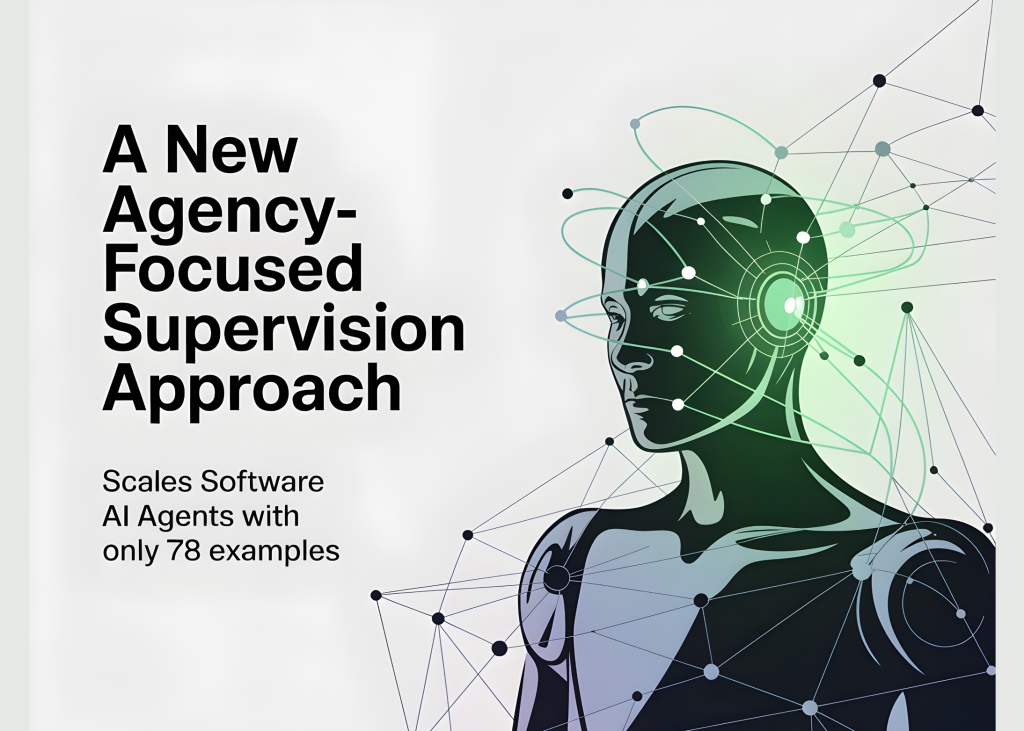Do curated, tool-grounded demonstrations build stronger software agents than broad piles of generic instruction data? A team of researchers from Shanghai Jiao Tong University and SII Generative AI Research Lab (GAIR) proposes LIMI (“Less Is More for Agency”), a supervised fine-tuning method that turns a base model into a capable software/research agent using 78 samples. LIMI scores 73.5% average on AgencyBench (FTFC 71.7, RC@3 74.2, SR@3 74.6), beating strong baselines (GLM-4.5 45.1, Qwen3-235B-A22B 27.5, Kimi-K2 24.1, DeepSeek-V3.1 11.9) and even surpassing variants trained on 10,000 samples—with 128× less data.

What exactly is new?
- Agency Efficiency Principle: LIMI state that agentic competence scales more with data quality/structure than raw sample count. The research team fine-tune GLM-4.5/GLM-4.5-Air on 78 long-horizon, tool-use trajectories (samples) and report large gains on AgencyBench and generalization suites (TAU2-bench, EvalPlus-HE/MBPP, DS-1000, SciCode).
- Minimal but dense supervision. Each trajectory (~13k–152k tokens; ~42.4k avg.) captures complete multi-turn workflows—model reasoning, tool calls, and environment observations—collected in the SII-CLI execution environment. Tasks span “vibe coding” (interactive software development) and research workflows (search, analysis, experiment design).

How does it work?
- Base models: GLM-4.5 (355B) and GLM-4.5-Air (106B). Training uses the slime SFT framework with identical configs across comparisons (to isolate data effects).
- Data construction: 60 real queries from practitioners + 18 synthesized from high-star GitHub PRs (tight QA by PhD annotators). For each query, LIMI logs the full agent trajectory to successful completion inside SII-CLI.
- Evaluation: AgencyBench (R=3 rounds) with FTFC, SR@3, RC@3; plus generalization suites (TAU2-airline/retail Pass^4, EvalPlus HE/MBPP, DS-1000, SciCode).

Results
- AgencyBench (avg): 73.5%. LIMI vs. GLM-4.5 (+28.4 pts); FTFC 71.7% vs 37.8%; SR@3 74.6% vs 47.4%.
- Data efficiency: LIMI (78 samples) outperforms GLM-4.5 trained on AFM-CodeAgent SFT (10,000 samples): 73.5% vs 47.8%—+53.7% absolute with 128× less data. Similar gaps hold vs AFM-WebAgent (7,610) and CC-Bench-Traj (260).
- Generalization: Across tool-use/coding/scientific computing, LIMI averages ~57%, exceeding GLM-4.5 and other baselines; without tool access, LIMI still leads slightly (50.0% vs 48.7% for GLM-4.5), indicating intrinsic gains beyond environment tooling.

Key Takeaways
- Data efficiency dominates scale. LIMI reaches 73.5% average on AgencyBench using curated trajectories, surpassing GLM-4.5 (45.1%) and showing a +53.7-point advantage over a 10k-sample SFT baseline—with 128× fewer samples.
- Trajectory quality, not bulk. Training data are long-horizon, tool-grounded workflows in collaborative software development and scientific research, collected via the SII-CLI execution stack referenced by the paper.
- Across-metric gains. On AgencyBench, LIMI reports FTFC 71.7%, SR@3 74.6%, and strong RC@3, with detailed tables showing large margins over baselines; generalization suites (TAU2, EvalPlus-HE/MBPP, DS-1000, SciCode) average 57.2%.
- Works across scales. Fine-tuning GLM-4.5 (355B) and GLM-4.5-Air (106B) both yields large deltas over their bases, indicating method robustness to model size.
Our Comments
The research team trains GLM-4.5 variants with 78 curated, long-horizon, tool-grounded trajectories captured in a CLI environment spanning software-engineering and research tasks. It reports 73.5% average on AgencyBench with FTFC, RC@3, and SR@3 metrics; baseline GLM-4.5 is reported at 45.1%. A comparison against a 10,000-sample AFM-CodeAgent SFT baseline shows 73.5% vs 47.8%; tool-free evaluation indicates intrinsic gains (≈50.0% for LIMI vs 48.7% GLM-4.5). Trajectories are multi-turn and token-dense, emphasizing planning, tool orchestration, and verification.
Check out the Paper, GitHub Page and Model Card on HF. Feel free to check out our GitHub Page for Tutorials, Codes and Notebooks. Also, feel free to follow us on Twitter and don’t forget to join our 100k+ ML SubReddit and Subscribe to our Newsletter.
The post A New Agency-Focused Supervision Approach Scales Software AI Agents With Only 78 Examples appeared first on MarkTechPost.




